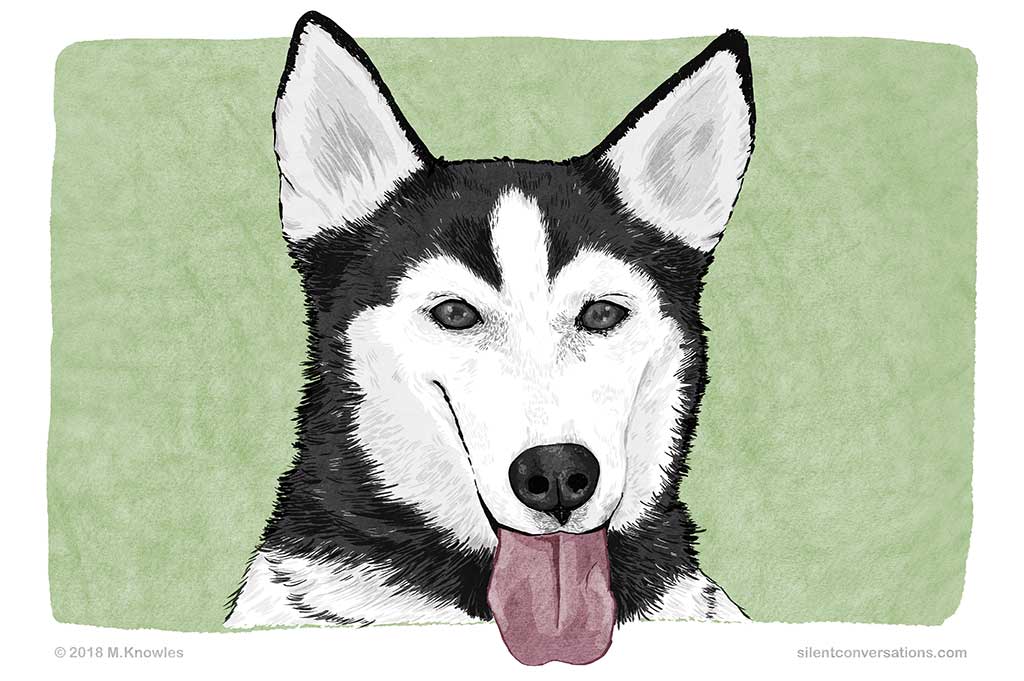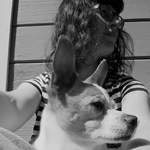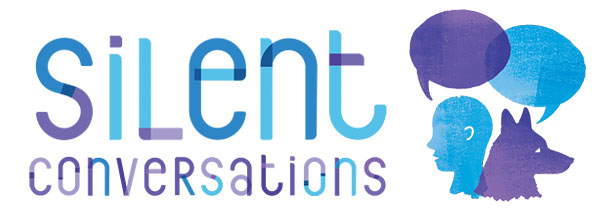
Eyes – Almond shaped – Dog Body Language
‘Almond-shaped eyes’ is a term used to describe the eyes of a dog in a relaxed and neutral position. The term ‘soft eyes’ may also be used and implies almond-shaped eyes. Both terms are quite self-explanatory. For instance, if a dog is alert, anxious or uncomfortable, the eyes will appear larger and rounder due to muscular tension in the face pulling the eyes open wider. If there is no tension in the face, the eyes naturally should appear slightly squinted and almond shaped. The gaze of the eyes should appear soft.
Along with soft/almond-shaped eyes, other parts of the dog’s body will indicate that the dog is relaxed. There should not be any tension around the eyes or on the face. The eyes may blink. The dog’s mouth may be slightly open, the ears could be slightly to the side and neutral, the body should be loose and moving fluidly.
Here are a few examples of situations where a dog eyes may appear almond shaped:
- A dog is lying on the grass in the park. There is no tension in his body; he seems relaxed and his tail lies loosely on the ground, following the curve of his back. His eyes are neutral and almond shaped, and his mouth is slightly open at times. His ears are relaxed and to the side, and occasionally they move around to listen to the sounds in the park. He slowly dips down his head and sniffs some of the grass in front of him. As his guardian approaches, the dog looks up at him, slightly squinting his eyes. His ears move back slightly, and he thumps his tail on the ground in a slow, circular pattern.
- A dog is walking around in the park, off leash. His body looks loose, and he moves easily as he strolls around. His eyes are almond shaped and his ears are to the side. His mouth is open, his lips look long, and his tongue is hanging out, as it is a warm day. Occasionally, he curves and dips his head down to sniff the grass, his mouth closing as he does so. He curves round to watch some dogs greeting each other in the distance. Stopping, he lifts his head a bit higher and closes his mouth. His ears go slightly forward, and his tail pauses and is held level with his back. The dogs in the distance greet curve around each other and go their separate ways. The dog curves away, moving in a loose flowing manner, with his tail wagging slightly from side to side. He continues to walk in the opposite direction and occasionally dips his head down to sniff.
These are just a few examples; there may be many more. Start observing to see if you can notice almond-shaped eyes in different contexts. As discussed below, interpretations such as the above examples should not be attempted without careful observation and consideration of all aspects of the situation.
A few notes to consider when observing dog body language:
Observation before interpretation
Interpretations should be offered only once you have observed the complete interaction and taken note of the wider picture. To offer an unbiased interpretation of the body language, observe and take note of the situation, taking into account the dog’s whole body, the body language signals and environment first before offering an interpretation. List all the body language you see in the order that it occurs; try to be descriptive as possible without adding any emotional language. For instance, saying a dog looks happy is not descriptive and would be seen as an interpretation rather than an observation.
You could however list what you observe: ears to the side, eyes almond shaped, slight shortening of the eye, mouth open, long lips, tongue out, body moving loosely, body facing side-on, tail wagging at a slow, even pace at body level.
From the observation I could interpret that the dog seems relaxed or comfortable. I still prefer to say relaxed rather than happy, as I feel you will truly never know exactly what the dog may be feeling on the inside emotionally. It is quite likely the dog may be feeling happy, but I prefer to comment on how the dog is behaving in response to the situation rather than presuming internal emotional states.
The importance of viewing body language within context
Interpretations can vary depending on the context. It is possible for certain body language to be used in different contexts and have subtle differences in meaning within those contexts. Individual body language signals should not be observed in isolation; the wider picture should be considered. Take note of what the dog’s body as a whole is saying. Keep in mind each dog is an individual with varying skills and experiences. What may be typical for one individual may not be for another. In order to observe body language in context, consider the following: the situation, body language signals, the body language expressed by all parts of the dog’s body, the environment, and the individuals involved. It is worth noting how the body language changes with feedback from the environment or the other individuals interacting.

Martha Knowles
Author
My vision is to create a community of dog guardians who share their observations and interpretations of their dogs’ silent conversations. Hopefully, these experiences and stories will provide some insight into dog communication, which is often overlooked by the untrained eye because it is unfamiliar to humans. We are accustomed to communicating mainly with sound, so we are not attuned to the silent subtle gestures and body language used by dogs to communicate. If you take the time to observe, you will start to see these 'silent conversations' going on around you. My dream is for dog communication to become common knowledge with all dog guardians and as many people as possible. Surprisingly, there are still some professionals working in various dog-related careers who are uneducated about dog body language. Greater awareness of how dogs communicate will help to provide better understanding and improve the mutual relationship between dogs and humans. This will promote safer interactions between our two species and hopefully remove some of the expectations placed on dogs within human society. I would like dog guardians to feel empowered with their knowledge of dog communication so that they can be their dogs’ advocates and stand up for themselves and their dogs when it really matters.
